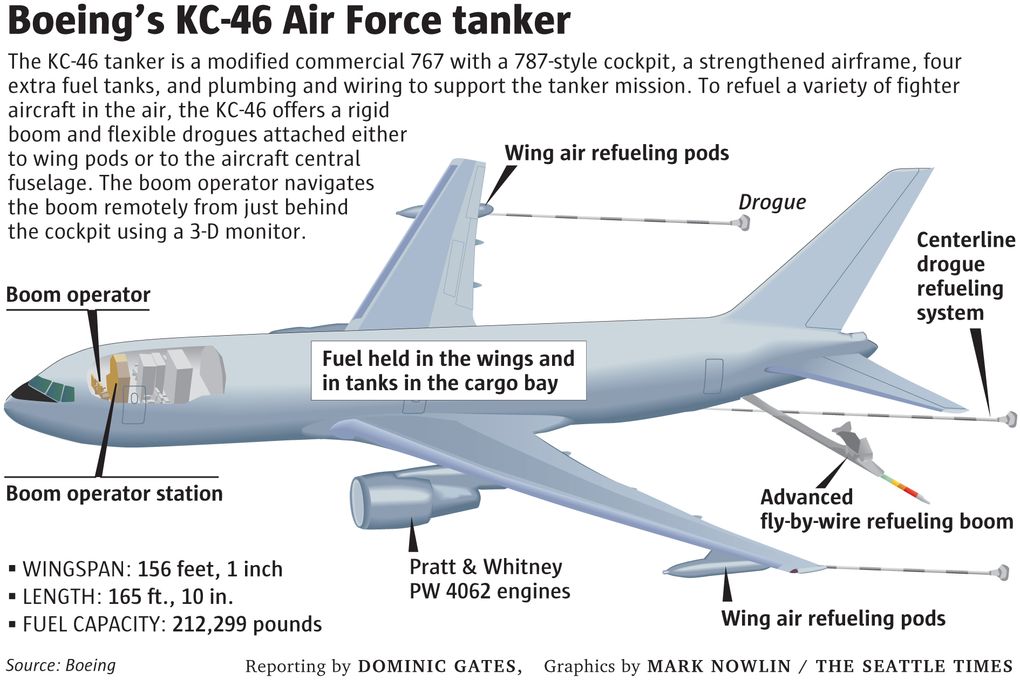Remember that list of KC-46 problems? Here’s how they’re getting fixed. (Link)
A copy of defense news headlines above says it best above. Otherwise, the KC-46 is on final approach before first delivery this summer or early fall. Back in 2015 Winging It features its III part discussion about the KC-46 Pegasus tanker program.

af.mil photo
Back in 2015, the tanker program had an uncertain outcome as the three links above explored. Its now becoming a reality after much refining. The whole program was never about the 767 frame or the A330 competitive bid but was about the technology for making this warfighter a winner. The A-330 and Airbus didn't have the chops to do what the military wanted and believed Boeing would do what it has now accomplished. Deliver a superior and unrivaled tanker/passenger convertible. Its primary mission is fueling the US Air Force vast fleet of aircraft.
A Seattle Times Photo

The aircraft interface with warfighters is the technological challenge and Boeing has almost solved all the myriad problems remaining that the US Air Force presented. Airbus has not demonstrated it has as capable defense program as Boeing has. The fixed cost experiment is almost completed by setting a precedence in place from which all future programs have learned valuable lessons from Boeing's KC-46 journey. The military is never satisfied, as it should not be, but the lessons learned have paved a way forward for the next fixed cost military program.
The 767 airframe has proved to be a tough airframe with advanced engineering features inherent in its original design.
The KC-46 program will complete its cycle from start to finish by this fall 2018 with the forever continued always improving model chasing it to its retirement.
It's late and over cost, but its a really good result which will be the envy of air forces around the world.
Another "Winging IT" chapter closes.


